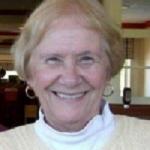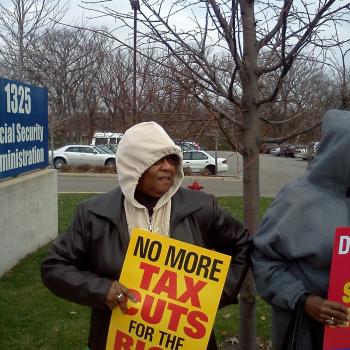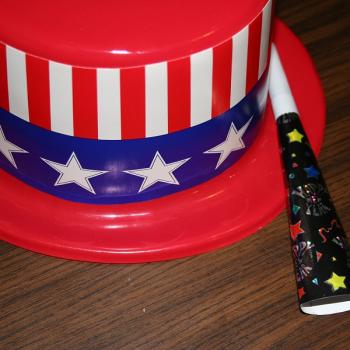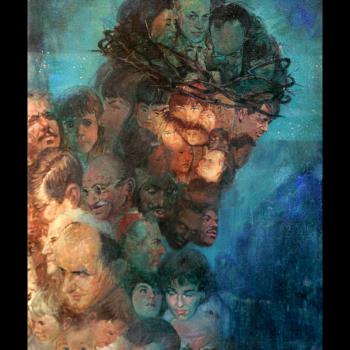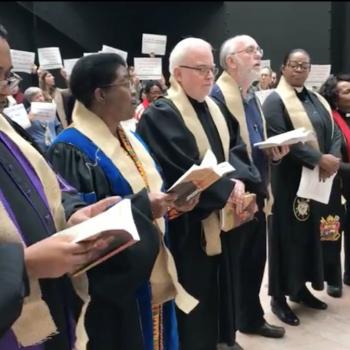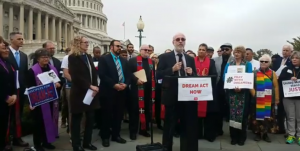 Last week I was invited to speak at a press conference on the Dream Act. After my comments someone came up to me, thanked me for my statement and asked me why there were no Catholic Bishops there. It is a question I am often asked. After Charlottesville many folks wrote articles about why there were no Catholic bishops or clergy protesting. Some have written articles suggesting this is a “come to Jesus moment” for the US Catholic Bishops. Sure, they eventually issued strong statements condemning what happened but why were they not there standing arm in arm with leaders from other faith traditions? There were Methodist bishops, UCC region presidents, leaders and clergy from every faith tradition except Catholic. Why not? Where were they?
Last week I was invited to speak at a press conference on the Dream Act. After my comments someone came up to me, thanked me for my statement and asked me why there were no Catholic Bishops there. It is a question I am often asked. After Charlottesville many folks wrote articles about why there were no Catholic bishops or clergy protesting. Some have written articles suggesting this is a “come to Jesus moment” for the US Catholic Bishops. Sure, they eventually issued strong statements condemning what happened but why were they not there standing arm in arm with leaders from other faith traditions? There were Methodist bishops, UCC region presidents, leaders and clergy from every faith tradition except Catholic. Why not? Where were they?
In my position I have been blessed with the opportunity to travel around the country and give talks to Catholic groups. Because of our work on climate justice, after Laudato Si was released, I was invited to speak at many Catholic venues about the Encyclical. Most recently due to our work on The Sultan and The Saint film I have been traveling to speak at Catholic venues. It does not matter what the issue or topic of my talk is. Inevitability one of the first comments or questions I am asked is, “Where are the bishops and why are they not leading on this?” I can almost predict this will happen.
Maybe before we discuss that question, we should first look at the history of bishops. I sometimes joke that as Catholics we believe that Jesus came, he spent three years preaching, he had dinner with his friends on Thursday, was arrested and crucified on Friday, rose from the dead on Sunday. Then the next Sunday, everyone started going to Mass. As Catholics we spend very little time learning about the evolution of our church. We think that how it is today is how it was at the time of Jesus. At the beginning of our church history, the bishops were elected solely by a popular vote of all the faithful laity and clergy of the various local churches. This included the election of the Bishop of Rome who later became known as the Pope. St Cyprian of Carthage, a third century bishop and considered one of the great saints, wrote: “a bishop be chosen in the presence of the people, before the eyes of all and that he be approved worthy and fit by public judgment and testimony.” In 251, St Cyprian described the process of electing Pope Cornelius in a letter to a contemporary: “Cornelius was made bishop by the judgment of God and His Christ, by the testimony of almost all the clergy, by the vote of the people who were then present, by the assembly of venerable bishops and good men.” In 215 St. Hippolytus, considered one of the most important 3rd-century theologians, wrote: “let the bishop be ordained as we appointed by above after having been elected by all the people.” This process continued into the fifth century. The fifth century popes Celestine I and Leo I condemned any attempt to impose a bishop without popular consent. Pope Leo stated: “He who is to preside over all must be elected by all.” Another great leader and saint, St. Ambrose, was proclaimed by the crowd bishop of Milan in 374. However, in the middle of the third century things began to change.
The first sign was the church beginning to exclude women from the voting. Then later the church leaders prevented the ordinary laymen from voting and restricted it to only the wealthy and powerful. The process really began to change when the church became the official religion of the empire. Bishops were appointed by kings rather than elected by the members. Kings began to even appoint laymen (as opposed to priests) as bishops. By the tenth century, bishops were full feudal lords who had their own armies. The laity were removed completely from the election process. It was around this time in 1159 that the Council of Cardinals was created. This all concluded in 1122, with the Concordat of Worms which ended lay investiture but still gave royalty much influence in selection of bishops. In 1485, around the time of the Reformation, Pope Innocent VIII completely removed any mention of election from the rite of consecrating bishops.
I am sure this all sounds fascinating and you are asking yourself, ‘What does the history of how bishops are appointed have to do with the reason bishops were not in Charlottesville?’ It should be painfully obvious it has everything to do with why bishops do not show up. The bishops are accountable to no one except themselves. They are appointed with no input from laity, professed religious and even other clergy. The bishops draw up a list of priests they deem suitable. The nuncio then decides on a short list, or terna, of three candidates for further investigation. This list is sent to the congregation of the Roman Curia who recommends the candidate to the Pope. Once appointed, a bishop remains until they turn 75. Even after retirement they are still considered a bishop and given the privilege that goes with the rank. This is all supposed to be done in secret. The church has created a system where bishops can be found guilty of committing criminal acts and still remain a bishop in good standing. This happened with Bishop Finn, who was found guilty of criminally shielding a priest who was a threat to children in a court of law. He remained a bishop in good standing for three years, during which time he continued to attend meetings of the bishops conference, vote for leaders of the conference and approve policy decisions of the conference. All while being a convicted criminal. If I taught at a Catholic school or worked at a Catholic institution, and charged with this crime, I would have been justifiably fired immediately. Yet even though Finn resigned a few years ago he still remains a bishop in good standing. Somewhere around 1,000 or so years ago the bishops forgot their calling was to be as Jesus was, servants to the people, and began believing the people should be servants to them. One only needs to look at how many bishops were slave owners during the 18th and 19th centuries.
This is not to suggest that all bishops are bad. I have been blessed and honored to meet and work with some truly inspirational men who do understand the concept of being a servant and are willing to be transformational. Men like Cardinal O’Malley who was willing to say Mass on the border and give Holy Communion to people through the wall separating us, or Archbishop Pedro Barreto (Archdiocese of Huancayo) who has received death threats for his statement calling for responsible environmental regulation for a multi-metallic smelter in La Oroya, Peru. A few years ago, when he was visiting DC he joined me at the end of a 100 mile march for immigrant women. The archbishop went around and washed the feet of every single immigrant woman who participated in the march. Then there was Blessed Clemens August Graf von Galen, a German cardinal who, while other Catholic leaders were trying to maintain an unholy alliance with the Nazi regime, led a Catholic protest against euthanasia and denounced the Nazi’s lawlessness. His homilies inspired German resistance groups like the White Rose Society.
Whenever I am giving a talk and am asked the question ‘where are the bishops and priests and why are they not doing more?,’ my response is, “They are not the church. You are the church. Why are you waiting around for them to lead, why are you not leading the way?” Last week I wrote a blog about my friend Anne Dennean who recently passed. She never waited around for permission from our pastor or bishop. Anne just acted out of her conscience and her call to be Christ-like. I have been arrested for nonviolent civil disobedience many times. I have stood arm in arm with folks from all walks of life. I have spent time in a jail cell with Methodist bishops, Presbyterian clergy and Rabbi’s. Not once during those times have I cared whether there were Catholic bishops around. Instead of lamenting about why bishops do not show up at press conferences and rallies, let’s honor those courageous Catholic leaders who do. There were a lot of Catholics in Charlottesville, VA during the alt-right protest – folks like Sister Patty Chappell the head of Pax Christi USA or Marie Dennis, the head of Pax Christi International. There were many other Catholic sisters and laity there. There are Catholic sisters who are leaders at the forefront of the justice movement like Sister Simone, Sister Ronnie from the Maryknolls and Sister Marie Lucey OSF, as well as priests like Fr. Clete Kiley and Fr. Tom Reese and laity like Scott Wright and Jean Stokan. So instead of lamenting who are not there let’s celebrate, honor and imitate those Catholic leaders who are there. Next time you are sitting in your pew getting upset because your parish priest has not mentioned justice in his homily, remember this is your church so do something. It is alright to have righteous anger if you use that for prayerful action.
Peace and All Good

